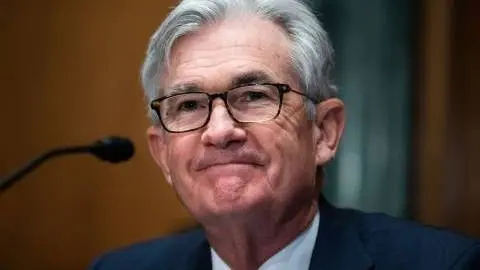US recession risks recede, but growth fears linger
Strong GDP and jobs growth shows that the US economy continues to shrug off high borrowing costs and tight credit conditions, largely through robust government spending and consumers running down their savings. These factors will be less supportive in 2024 and inflation is on the path to 2%, so the Federal Reserve has the room to cut interest rates sharply
Fed remains wary about easing policy too soon
After the Federal Reserve’s dovish shift at the December FOMC meeting, where it signalled it was anticipating cutting the Fed funds target rate by 75bp in 2024, markets pushed on aggressively. Subdued inflation prints led the market to go so far as to price nearly 175bp of rate cuts starting at the March FOMC meeting. However, fourth quarter GDP and January payrolls subsequently beat all expectations and Fed officials have since moved to downplay the prospect of any imminent easing. While employment and inflation goals are “moving into better balance”, Fed Chair Jerome Powell suggested that the central bank won’t cut until it has “gained greater confidence that inflation is moving sustainable toward 2 percent”.
We think that the inflation story will look increasingly benign over the next few months, but we suspect that the Fed recognises its credibility was damaged by its "inflation is transitory" assertion in 2021 only to have to rapidly reverse course with significant rate hikes through 2022 and 2023. The last thing the Fed wants to do is get it wrong again at a key turning point, loosen too soon, too quickly and reignite inflation pressures. We don’t think that will happen, but so long as the official activity numbers continue to come in hot, the Fed won’t feel comfortable easing policy.
ISM indices are tracking weaker than official GDP growth

But growth momentum is moderating
In this regard, the disconnect between strong official data and weaker business surveys remains a key topic of debate. The chart above shows that the widely watched ISM indices – which have been published for decades – are at levels historically consistent with GDP growth of around 1% year-on-year and not the 3.1% recorded in the fourth quarter. Likewise, hiring surveys paint a more downbeat picture than official payrolls data, while the Conference Board’s leading index remains at levels historically consistent with a recession.
We maintain the view that high borrowing costs and tight credit conditions will increasingly weigh on activity and Covid-era accrued household savings provide less support for consumer spending. This will gradually result in the official data cooling and the Fed becoming more comfortable with interest rate cuts, but this is more likely to be a second quarter into the third story given seemingly decent consumer spending momentum in the early first quarter.
Inflation to allow the Fed move back towards neutral policy rates
Moreover, two of the Fed’s favoured economic indicators are making clear positive progress in indicating inflation will sustainably move back to the 2% target. The core personal consumer expenditure deflator, which is the central bank's inflation measure of choice, is now consistently tracking a month-on-month rate below 0.2%. Meanwhile, the employment cost index, the broadest measure of labour costs, is slowing and the decline in the proportion of workers quitting jobs to move to another suggests a less frenetic jobs market, which will help cool wage pressures.
By May, we think ongoing subdued core inflation measures and cooler growth and jobs numbers will give the Fed the confidence to start cutting the policy rate, getting down to 4% by the end of this year and 3% by mid-2025. This will merely get us close to neutral territory – the Fed’s view is that 2.5% is likely the long-term average. If the economy does enter a more troubled period, i.e., through financial stress related to commercial real estate or consumer loan losses, this forces the Fed to move into 'stimulative' territory, there is scope for much deeper interest cuts than we are forecasting.
Download
Download article
8 February 2024
ING Monthly: Reasons to be cheerful, Part 3 This bundle contains {bundle_entries}{/bundle_entries} articlesThis publication has been prepared by ING solely for information purposes irrespective of a particular user's means, financial situation or investment objectives. The information does not constitute investment recommendation, and nor is it investment, legal or tax advice or an offer or solicitation to purchase or sell any financial instrument. Read more
